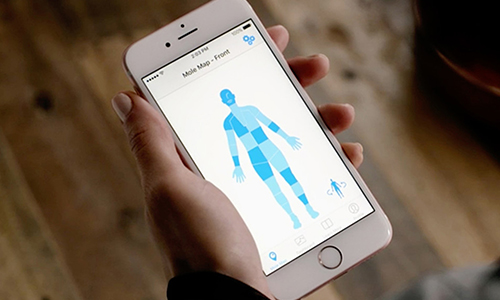Health app adoption tripled since 2014, Accenture survey finds
March 12, 2018
Source: HealthcareITNews
 938
938

New survey data out this week from Accenture shows that healthcare consumers are using more wearables and apps, and are more bullish on virtual care than ever before. But they also have high expectations for their health technology, which the industry may not be able to meet.
“One of the things we were really interested in this year is what is the relative level of consumer expectations, particularly because we know they’re being formed by experiences outside of healthcare,” Kaveh Safavi, MD, one of the authors of the report, told MobiHealthNews during HIMSS18. “And one of our hypotheses is that their experiences outside healthcare drive their expectations of how healthcare should be. That creates both an opportunity and a risk for the healthcare system.”
According to Accenture’s survey of 7,905 Americans aged 18 years and older, 33 percent of Americans use wearables, up from 26 percent two years ago. Forty-six percent use apps for healthcare, up from 36 in 2016. If you go back to 2014, wearables and health apps were used by 9 and 16 percent of respondents, respectively, which means that app adoption has tripled — and wearable adoption has nearly quadrupled — in four years.
“All of that shows the transition from a smaller market that’s now tipping into a mass market,” Brian Kalis, a managing director at Accenture and another author on the report, said during the conference. “The other new component is that expectation gap is just increasing. … No longer are consumers comparing their health system to another health system. They’re sitting there saying ‘I get these experiences from the brands in my life, I’m not expecting it to be that much better, but it is so far off from what I can get from my bank, my hotel, my airline.'”
Use of telemedicine — termed ‘virtual care services’ in the report — has gone up as well, but less dramatically. That adoption is at 25 percent, up from 21 percent last year.
Participants were interested in using telemedicine, but particular about the context — 73 percent said they’d use it for after-hours care compared to just 28 percent saying they’d use virtual care for their annual physical.
“People understand that some clinical conditions are low risk and some are high risk. No one has the expectation that everything can be done virtually,” Safavi said. “… Where trust is low and risk is high, you have to be in the room with them. If I was recently diagnosed [with a] brain tumor, I want to be with a surgeon. But a parent whose kid has been diagnosed three times with an ear infection and she knows it’s an ear infection probably thinks ‘A competent physician can address my issues and, if it turns out not to be the case, I can make an appointment with the doctor. But today, instead of taking time off from work, I’m going to solve this problem.’”
The survey also showed a big gap in which healthcare stakeholders consumers trust with their data. Ninety percent would trust their doctor with data from wearables and 72 percent would trust their insurance plan. But only 38 percent would trust their employer.
By DduRead more on
- Disposable Medical Products that Keep Your Medical Facility Clean and Sterile March 31, 2022
- 10 Triumphant Drug Launches Of The Decade August 26, 2021
- Ultrasonic Nebulizer Market Views September 6, 2018
- 4 Best-Selling Digital Thermometers on Drugdu.com in 2018 September 5, 2018
- Don’t Miss These Tips before Your Cardiac Monitor Purchase September 5, 2018
your submission has already been received.
OK
Subscribe
Please enter a valid Email address!
Submit
The most relevant industry news & insight will be sent to you every two weeks.



